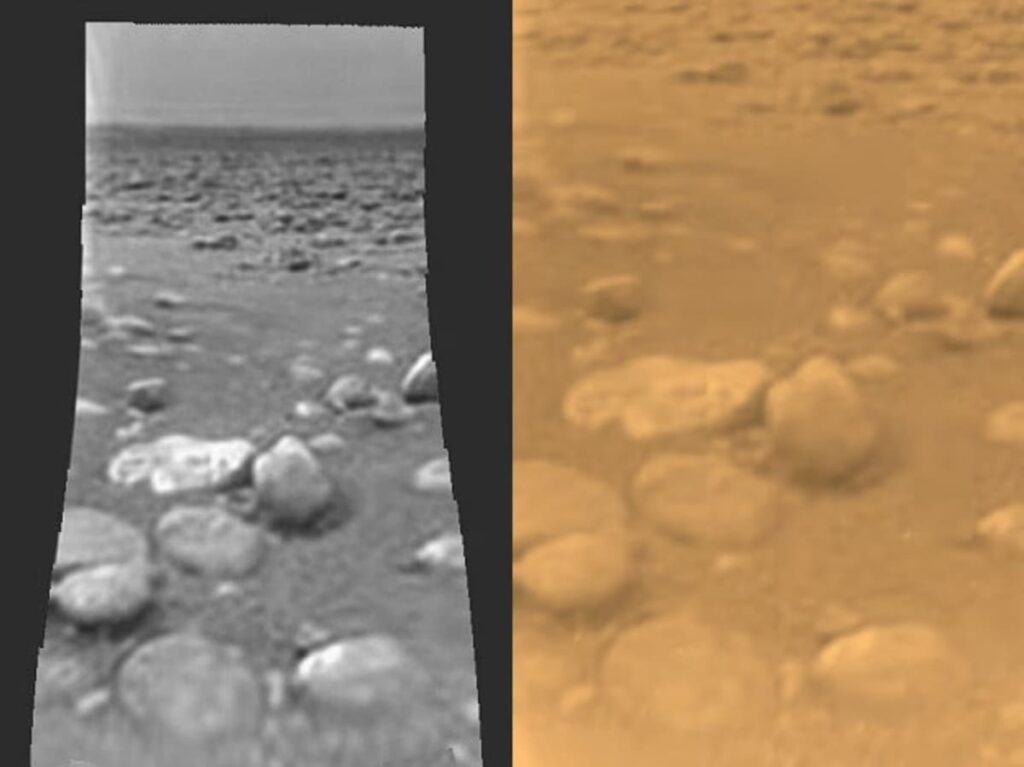On Titan, Saturn’s largest moon, a groundbreaking discovery by researchers from Sweden’s Chalmers University of Technology, working with NASA, is shaking up some of chemistry’s most basic principles. It also offers tantalizing new clues about how life might have first begun on Earth.
Titan: a natural lab for life’s origins
Titan’s frigid surface and thick atmosphere — rich in nitrogen and methane — resemble the conditions that likely existed on early Earth billions of years ago. By studying chemical reactions in this alien environment, scientists hope to piece together the steps that led from simple molecules to the first signs of life. In many ways, Titan serves as a natural time capsule, offering a glimpse into our planet’s distant past.
When opposites attract: a new kind of chemistry
In their study, the researchers made an unexpected discovery: substances long thought to be incompatible, much like oil and water, can actually interact under extreme conditions. They found that hydrogen cyanide — a polar molecule common in Titan’s atmosphere — can form crystals with nonpolar molecules like methane and ethane. This surprising behavior overturns one of chemistry’s oldest rules: “like dissolves like.”
Published in PNAS, the study suggests that this discovery could change how we understand Titan’s geology and even how life’s building blocks — amino acids and nucleic bases — might form. “This could help us better grasp prebiotic chemistry and how it develops in extreme environments,” explained lead researcher Martin Rahm.

The only image of Titan’s surface, taken by the ESA’s Huygens probe, which landed on this moon of Saturn in January 2005. © ESA
How the discovery was made
To uncover these interactions, the team combined advanced computer simulations with laser spectroscopy experiments. The results revealed that these molecules could form stable structures at extremely low temperatures, challenging long-held assumptions about chemical behavior.
“I see this as a beautiful example of pushing the boundaries of chemistry,” Rahm said. “It shows that even the most universal rules have exceptions.”
The implications extend beyond Titan itself. Hydrogen cyanide, he noted, may be crucial in creating the basic molecular ingredients for life — amino acids that build proteins, and nucleic bases that make up genetic code. This finding could reshape how scientists think about chemistry in harsh, frozen worlds and how life might take root there.
Looking ahead to the Dragonfly mission
NASA’s Dragonfly mission, set to arrive on Titan in 2034, will study its surface up close. Until then, Rahm and his colleagues plan to continue their research into hydrogen cyanide, working closely with NASA. “Hydrogen cyanide exists throughout the universe — in dust clouds, planetary atmospheres, even comets,” Rahm said. “Our results could help explain what’s happening in other cold environments in space, and whether other nonpolar molecules can also interact with hydrogen cyanide crystals — and if so, what that means for the chemistry that precedes life.”
Beyond the rules of chemistry
This discovery is a reminder that even nature’s most trusted laws can bend in unexpected ways. By exploring these rare exceptions, scientists are expanding the frontiers of what’s possible — not only in space exploration, but in our understanding of how chemistry becomes biology. The partnership between Chalmers University and NASA underscores how collaboration across disciplines can open entirely new windows on the origins of life itself.
![]()
Rémy Decourt
Journalist
Born shortly after Neil Armstrong’s first steps on the Moon in 1969, my journey into space exploration has been entirely self-taught. A military stay in Mururoa sparked my formal education in space sciences, and early sky-watching experiences in an astronomy club ignited my passion. I founded flashespace.com, transitioning from sky observation to a deep interest in space missions, satellites, and human and robotic exploration. Since 2010, I’ve been part of Futura’s editorial team, covering space news and working as a freelance writer with extensive international field experience in space-related sites.

